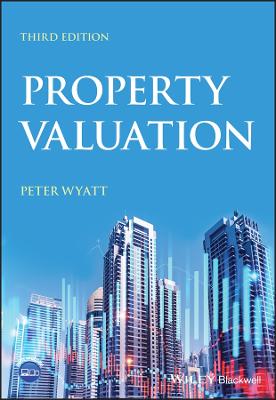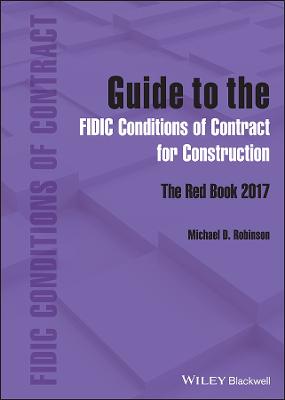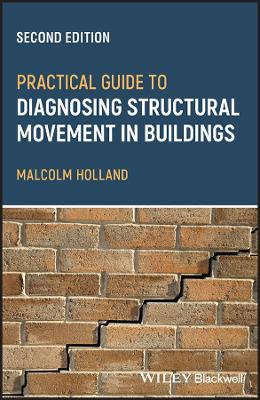Property Valuation
 -15%
portes grátis
-15%
portes grátis
Property Valuation
Wyatt, Peter
John Wiley and Sons Ltd
11/2022
560
Mole
Inglês
9781119767411
15 a 20 dias
Descrição não disponível.
Preface xi
SECTION A VALUATION PRINCIPLES 1
1 Property Rights and Property Value 3
1.1 Property rights 3
1.1.1 Tenure 4
1.1.2 Property rights in England 6
1.2 Property value 8
1.2.1 Extent of property rights 9
1.2.2 Security of property rights 11
1.2.3 Physical and geographical characteristics 13
1.3 Property valuation 13
1.3.1 Market transactions 14
1.3.2 Investment decisions 15
1.3.3 Compensation 15
1.3.4 Land and property taxation 16
1.3.5 Accounting, lending and insurance 16
Note 18
References 18
2 The Economics of Property Value 19
2.1 Introduction 19
2.2 Land as a resource 19
2.3 Supply and demand, markets and equilibrium price determination 21
2.4 The property market and price determination 22
2.4.1 The property market 22
2.4.2 Price determination in the land market 23
2.4.3 Price determination in the property (land and buildings)
market 26
2.5 Location and land use 29
2.6 Economics of property development 36
2.6.1 Type and density of development 36
2.6.2 Timing of development 38
2.7 Non-market
concepts of value 40
Notes 42
References 42
3 Property Markets 45
3.1 Introduction 45
3.2 Property markets 46
3.2.1 Occupier market 47
3.2.2 Investment market 59
3.2.3 Development market 63
3.3 Property markets interaction 69
Note 72
References 72
4 Valuation Mathematics 75
4.1 Introduction 75
4.2 The time value of money 76
4.3 Single-sum
investments 77
4.4 Multi-period
investments 78
4.4.1 Level annuities 78
4.4.2 From a level annuity to a growth annuity 82
4.5 Timing of receipts 83
4.6 Yields 84
4.7 Rates of return 85
Notes 90
References 91
5 Valuation Process and Governance 101
5.1 Valuation process 101
5.1.1 Confirm instruction and agree terms of engagement 101
5.1.2 Inspect the property 103
5.1.3 Gather and analyse comparable evidence 104
5.1.4 Establish basis of value 106
5.1.5 Make assumptions and special assumptions as
appropriate 109
5.1.6 Select valuation approach(es) and method(s) and
undertake the valuation 110
5.1.7 Produce a valuation report 110
5.2 Valuation governance 112
5.2.1 Standards of conduct 113
5.2.2 Valuation process standards 115
5.2.3 International valuation standards 115
5.2.4 National valuation standards 116
5.3 Valuation systems 117
5.3.1 Information systems 119
5.3.2 Valuation capacity 121
5.3.3 Professional valuers associations 122
5.4 Conclusion 125
Notes 127
References 127
SECTION B VALUATION APPROACHES AND METHODS 129
6 Market Approach 131
6.1 Introduction 131
6.2 The comparison method 132
6.2.1 Collect comparable evidence of market transactions 132
6.2.2 Identification of value-significant
characteristics 134
6.2.3 Adjustment of value-significant
characteristics 139
6.3 Hedonic regression method 150
6.3.1 Simple linear regression 151
6.3.2 Multiple linear regression 156
Notes 168
References 168
7 Income Approach 173
7.1 Introduction 173
7.2 Income capitalisation method 174
7.2.1 Perpetual annuities (freeholds) 175
7.2.2 Annuities with a term certain (leaseholds) 179
7.3 Discounted cash-flow method 183
7.3.1 A discounted Cash-Flow valuation model 184
7.3.2 Perpetual annuities 190
7.3.3 Annuities with a term certain 193
7.4 Profits method 195
7.4.1 Method 196
Notes 204
References 204
8 Cost Approach 235
8.1 Introduction 235
8.2 Replacement cost method 236
8.2.1 Replacement cost 236
8.2.2 Depreciation 237
8.2.3 Land value 240
8.2.4 Application of the replacement cost method 242
8.2.5 Issues arising from the application of the replacement
cost method 243
8.3 Residual method 245
8.3.1 Basic residual technique 246
8.3.2 Basic residual profit appraisal 254
8.3.3 Discounted cash-flow
Technique 255
Notes 260
References 260
SECTION C VALUATION APPLICATION 271
9 Valuation of Investment Property 273
9.1 Introduction 273
9.2 Analysis of rents 274
9.2.1 Rental lease incentives 274
9.2.2 Capital lease incentives 277
9.2.3 'Surrendered' leases 280
9.2.4 Repairs, insurance, and ground rents 281
9.2.5 Rent-review pattern 283
9.3 Analysis of yields 284
9.3.1 Equivalent yield 284
9.3.2 Weighted average unexpired lease term 285
9.4 Market valuation of investment property 285
9.4.1 Voids and break options 285
9.4.2 Statutory considerations 288
9.4.3 Over-rented properties 294
9.4.4 Turnover leases 296
9.4.5 Long lease investments 299
9.4.6 Synergistic value 299
9.5 Investment valuation of investment property 302
9.5.1 Inputs and assumptions 303
9.5.2 Investment valuation using a discounted cash flow 306
References 311
10 Valuation of Development Property 359
10.1 Introduction 359
10.2 Market valuation of development property 359
10.2.1 Comparison method 361
10.2.2 Residual method 362
10.3 Investment valuation of development property 369
10.3.1 Estimating the investment value of development property 369
10.3.2 Financial appraisals of development property 372
References 381
11 Valuations for Financial Statements and for Secured Lending 401
11.1 Valuing property for financial statements 401
11.1.1 Basis of reporting measurement 402
11.1.2 Property categorisation 403
11.1.3 Basis of value 405
11.1.4 Valuation 407
11.1.5 Other issues 411
11.1.6 Example valuations 413
11.2 Valuing property for secured lending purposes 415
11.2.1 Professional standards and guidance 416
11.2.2 Valuation methods for loan security valuations 420
11.2.3 Example valuation 420
11.2.4 Reinstatement cost assessment 424
Note 424
References 424
12 Valuations for Land and Property Taxation 449
12.1 Introduction 449
12.2 A land tax or a land and property tax? 450
12.3 Types of land and property taxes 452
12.3.1 Occupation taxes 453
12.3.2 Transfer and wealth taxes 455
12.3.3 Betterment taxation 455
12.4 Land and property taxation in england and wales 456
12.4.1 Occupation taxes 457
12.4.2 Transfer and wealth taxes 466
12.4.3 Betterment taxation in England 469
Notes 472
References 472
13 Valuations for Expropriation 477
13.1 Introduction 477
13.2 Valuation for expropriation 478
13.2.1 Valuing property rights that are to be taken or extinguished 478
13.2.2 Valuing retained property rights 479
13.2.3 Valuing compensation for disturbance 479
13.2.4 Valuing customary and informal land for expropriation purposes 480
13.2.5 Expropriation and non-market value 481
13.3 Valuations for compulsory purchase and planning compensation in England 482
13.3.1 Legal background 482
13.3.2 Compensation for land2 taken (compulsorily acquired) 483
13.3.3 Identifying the planning position 486
13.3.4 Compensation for severance and injurious affection 487
13.3.5 Compensation for disturbance and other losses 491
13.4 Planning compensation in England 493
13.4.1 Revocation, modification and discontinuance orders 493
13.4.2 Purchase notices 493
13.4.3 Blight compensation 494
Notes 494
References 495
14 Valuation Variance, Risk and Optionality 499
14.1 Introduction 499
14.2 Valuation accuracy and valuation variance 500
14.3 Analysing risk 502
14.3.1 Sensitivity analysis 503
14.3.2 Scenario modelling 504
14.3.3 Simulation 506
14.4 Flexibility and options 511
14.5 Uncertainty 513
References 515
Appendix A: Land Uses and Valuation Methods 525
Glossary 529
Index 000
SECTION A VALUATION PRINCIPLES 1
1 Property Rights and Property Value 3
1.1 Property rights 3
1.1.1 Tenure 4
1.1.2 Property rights in England 6
1.2 Property value 8
1.2.1 Extent of property rights 9
1.2.2 Security of property rights 11
1.2.3 Physical and geographical characteristics 13
1.3 Property valuation 13
1.3.1 Market transactions 14
1.3.2 Investment decisions 15
1.3.3 Compensation 15
1.3.4 Land and property taxation 16
1.3.5 Accounting, lending and insurance 16
Note 18
References 18
2 The Economics of Property Value 19
2.1 Introduction 19
2.2 Land as a resource 19
2.3 Supply and demand, markets and equilibrium price determination 21
2.4 The property market and price determination 22
2.4.1 The property market 22
2.4.2 Price determination in the land market 23
2.4.3 Price determination in the property (land and buildings)
market 26
2.5 Location and land use 29
2.6 Economics of property development 36
2.6.1 Type and density of development 36
2.6.2 Timing of development 38
2.7 Non-market
concepts of value 40
Notes 42
References 42
3 Property Markets 45
3.1 Introduction 45
3.2 Property markets 46
3.2.1 Occupier market 47
3.2.2 Investment market 59
3.2.3 Development market 63
3.3 Property markets interaction 69
Note 72
References 72
4 Valuation Mathematics 75
4.1 Introduction 75
4.2 The time value of money 76
4.3 Single-sum
investments 77
4.4 Multi-period
investments 78
4.4.1 Level annuities 78
4.4.2 From a level annuity to a growth annuity 82
4.5 Timing of receipts 83
4.6 Yields 84
4.7 Rates of return 85
Notes 90
References 91
5 Valuation Process and Governance 101
5.1 Valuation process 101
5.1.1 Confirm instruction and agree terms of engagement 101
5.1.2 Inspect the property 103
5.1.3 Gather and analyse comparable evidence 104
5.1.4 Establish basis of value 106
5.1.5 Make assumptions and special assumptions as
appropriate 109
5.1.6 Select valuation approach(es) and method(s) and
undertake the valuation 110
5.1.7 Produce a valuation report 110
5.2 Valuation governance 112
5.2.1 Standards of conduct 113
5.2.2 Valuation process standards 115
5.2.3 International valuation standards 115
5.2.4 National valuation standards 116
5.3 Valuation systems 117
5.3.1 Information systems 119
5.3.2 Valuation capacity 121
5.3.3 Professional valuers associations 122
5.4 Conclusion 125
Notes 127
References 127
SECTION B VALUATION APPROACHES AND METHODS 129
6 Market Approach 131
6.1 Introduction 131
6.2 The comparison method 132
6.2.1 Collect comparable evidence of market transactions 132
6.2.2 Identification of value-significant
characteristics 134
6.2.3 Adjustment of value-significant
characteristics 139
6.3 Hedonic regression method 150
6.3.1 Simple linear regression 151
6.3.2 Multiple linear regression 156
Notes 168
References 168
7 Income Approach 173
7.1 Introduction 173
7.2 Income capitalisation method 174
7.2.1 Perpetual annuities (freeholds) 175
7.2.2 Annuities with a term certain (leaseholds) 179
7.3 Discounted cash-flow method 183
7.3.1 A discounted Cash-Flow valuation model 184
7.3.2 Perpetual annuities 190
7.3.3 Annuities with a term certain 193
7.4 Profits method 195
7.4.1 Method 196
Notes 204
References 204
8 Cost Approach 235
8.1 Introduction 235
8.2 Replacement cost method 236
8.2.1 Replacement cost 236
8.2.2 Depreciation 237
8.2.3 Land value 240
8.2.4 Application of the replacement cost method 242
8.2.5 Issues arising from the application of the replacement
cost method 243
8.3 Residual method 245
8.3.1 Basic residual technique 246
8.3.2 Basic residual profit appraisal 254
8.3.3 Discounted cash-flow
Technique 255
Notes 260
References 260
SECTION C VALUATION APPLICATION 271
9 Valuation of Investment Property 273
9.1 Introduction 273
9.2 Analysis of rents 274
9.2.1 Rental lease incentives 274
9.2.2 Capital lease incentives 277
9.2.3 'Surrendered' leases 280
9.2.4 Repairs, insurance, and ground rents 281
9.2.5 Rent-review pattern 283
9.3 Analysis of yields 284
9.3.1 Equivalent yield 284
9.3.2 Weighted average unexpired lease term 285
9.4 Market valuation of investment property 285
9.4.1 Voids and break options 285
9.4.2 Statutory considerations 288
9.4.3 Over-rented properties 294
9.4.4 Turnover leases 296
9.4.5 Long lease investments 299
9.4.6 Synergistic value 299
9.5 Investment valuation of investment property 302
9.5.1 Inputs and assumptions 303
9.5.2 Investment valuation using a discounted cash flow 306
References 311
10 Valuation of Development Property 359
10.1 Introduction 359
10.2 Market valuation of development property 359
10.2.1 Comparison method 361
10.2.2 Residual method 362
10.3 Investment valuation of development property 369
10.3.1 Estimating the investment value of development property 369
10.3.2 Financial appraisals of development property 372
References 381
11 Valuations for Financial Statements and for Secured Lending 401
11.1 Valuing property for financial statements 401
11.1.1 Basis of reporting measurement 402
11.1.2 Property categorisation 403
11.1.3 Basis of value 405
11.1.4 Valuation 407
11.1.5 Other issues 411
11.1.6 Example valuations 413
11.2 Valuing property for secured lending purposes 415
11.2.1 Professional standards and guidance 416
11.2.2 Valuation methods for loan security valuations 420
11.2.3 Example valuation 420
11.2.4 Reinstatement cost assessment 424
Note 424
References 424
12 Valuations for Land and Property Taxation 449
12.1 Introduction 449
12.2 A land tax or a land and property tax? 450
12.3 Types of land and property taxes 452
12.3.1 Occupation taxes 453
12.3.2 Transfer and wealth taxes 455
12.3.3 Betterment taxation 455
12.4 Land and property taxation in england and wales 456
12.4.1 Occupation taxes 457
12.4.2 Transfer and wealth taxes 466
12.4.3 Betterment taxation in England 469
Notes 472
References 472
13 Valuations for Expropriation 477
13.1 Introduction 477
13.2 Valuation for expropriation 478
13.2.1 Valuing property rights that are to be taken or extinguished 478
13.2.2 Valuing retained property rights 479
13.2.3 Valuing compensation for disturbance 479
13.2.4 Valuing customary and informal land for expropriation purposes 480
13.2.5 Expropriation and non-market value 481
13.3 Valuations for compulsory purchase and planning compensation in England 482
13.3.1 Legal background 482
13.3.2 Compensation for land2 taken (compulsorily acquired) 483
13.3.3 Identifying the planning position 486
13.3.4 Compensation for severance and injurious affection 487
13.3.5 Compensation for disturbance and other losses 491
13.4 Planning compensation in England 493
13.4.1 Revocation, modification and discontinuance orders 493
13.4.2 Purchase notices 493
13.4.3 Blight compensation 494
Notes 494
References 495
14 Valuation Variance, Risk and Optionality 499
14.1 Introduction 499
14.2 Valuation accuracy and valuation variance 500
14.3 Analysing risk 502
14.3.1 Sensitivity analysis 503
14.3.2 Scenario modelling 504
14.3.3 Simulation 506
14.4 Flexibility and options 511
14.5 Uncertainty 513
References 515
Appendix A: Land Uses and Valuation Methods 525
Glossary 529
Index 000
Este título pertence ao(s) assunto(s) indicados(s). Para ver outros títulos clique no assunto desejado.
property valuation; property valuation textbook; property valuation methods; property valuation theory; property valuation practice; international property valuation; real estate valuation; property appraisal textbook; commercial property valuation
Preface xi
SECTION A VALUATION PRINCIPLES 1
1 Property Rights and Property Value 3
1.1 Property rights 3
1.1.1 Tenure 4
1.1.2 Property rights in England 6
1.2 Property value 8
1.2.1 Extent of property rights 9
1.2.2 Security of property rights 11
1.2.3 Physical and geographical characteristics 13
1.3 Property valuation 13
1.3.1 Market transactions 14
1.3.2 Investment decisions 15
1.3.3 Compensation 15
1.3.4 Land and property taxation 16
1.3.5 Accounting, lending and insurance 16
Note 18
References 18
2 The Economics of Property Value 19
2.1 Introduction 19
2.2 Land as a resource 19
2.3 Supply and demand, markets and equilibrium price determination 21
2.4 The property market and price determination 22
2.4.1 The property market 22
2.4.2 Price determination in the land market 23
2.4.3 Price determination in the property (land and buildings)
market 26
2.5 Location and land use 29
2.6 Economics of property development 36
2.6.1 Type and density of development 36
2.6.2 Timing of development 38
2.7 Non-market
concepts of value 40
Notes 42
References 42
3 Property Markets 45
3.1 Introduction 45
3.2 Property markets 46
3.2.1 Occupier market 47
3.2.2 Investment market 59
3.2.3 Development market 63
3.3 Property markets interaction 69
Note 72
References 72
4 Valuation Mathematics 75
4.1 Introduction 75
4.2 The time value of money 76
4.3 Single-sum
investments 77
4.4 Multi-period
investments 78
4.4.1 Level annuities 78
4.4.2 From a level annuity to a growth annuity 82
4.5 Timing of receipts 83
4.6 Yields 84
4.7 Rates of return 85
Notes 90
References 91
5 Valuation Process and Governance 101
5.1 Valuation process 101
5.1.1 Confirm instruction and agree terms of engagement 101
5.1.2 Inspect the property 103
5.1.3 Gather and analyse comparable evidence 104
5.1.4 Establish basis of value 106
5.1.5 Make assumptions and special assumptions as
appropriate 109
5.1.6 Select valuation approach(es) and method(s) and
undertake the valuation 110
5.1.7 Produce a valuation report 110
5.2 Valuation governance 112
5.2.1 Standards of conduct 113
5.2.2 Valuation process standards 115
5.2.3 International valuation standards 115
5.2.4 National valuation standards 116
5.3 Valuation systems 117
5.3.1 Information systems 119
5.3.2 Valuation capacity 121
5.3.3 Professional valuers associations 122
5.4 Conclusion 125
Notes 127
References 127
SECTION B VALUATION APPROACHES AND METHODS 129
6 Market Approach 131
6.1 Introduction 131
6.2 The comparison method 132
6.2.1 Collect comparable evidence of market transactions 132
6.2.2 Identification of value-significant
characteristics 134
6.2.3 Adjustment of value-significant
characteristics 139
6.3 Hedonic regression method 150
6.3.1 Simple linear regression 151
6.3.2 Multiple linear regression 156
Notes 168
References 168
7 Income Approach 173
7.1 Introduction 173
7.2 Income capitalisation method 174
7.2.1 Perpetual annuities (freeholds) 175
7.2.2 Annuities with a term certain (leaseholds) 179
7.3 Discounted cash-flow method 183
7.3.1 A discounted Cash-Flow valuation model 184
7.3.2 Perpetual annuities 190
7.3.3 Annuities with a term certain 193
7.4 Profits method 195
7.4.1 Method 196
Notes 204
References 204
8 Cost Approach 235
8.1 Introduction 235
8.2 Replacement cost method 236
8.2.1 Replacement cost 236
8.2.2 Depreciation 237
8.2.3 Land value 240
8.2.4 Application of the replacement cost method 242
8.2.5 Issues arising from the application of the replacement
cost method 243
8.3 Residual method 245
8.3.1 Basic residual technique 246
8.3.2 Basic residual profit appraisal 254
8.3.3 Discounted cash-flow
Technique 255
Notes 260
References 260
SECTION C VALUATION APPLICATION 271
9 Valuation of Investment Property 273
9.1 Introduction 273
9.2 Analysis of rents 274
9.2.1 Rental lease incentives 274
9.2.2 Capital lease incentives 277
9.2.3 'Surrendered' leases 280
9.2.4 Repairs, insurance, and ground rents 281
9.2.5 Rent-review pattern 283
9.3 Analysis of yields 284
9.3.1 Equivalent yield 284
9.3.2 Weighted average unexpired lease term 285
9.4 Market valuation of investment property 285
9.4.1 Voids and break options 285
9.4.2 Statutory considerations 288
9.4.3 Over-rented properties 294
9.4.4 Turnover leases 296
9.4.5 Long lease investments 299
9.4.6 Synergistic value 299
9.5 Investment valuation of investment property 302
9.5.1 Inputs and assumptions 303
9.5.2 Investment valuation using a discounted cash flow 306
References 311
10 Valuation of Development Property 359
10.1 Introduction 359
10.2 Market valuation of development property 359
10.2.1 Comparison method 361
10.2.2 Residual method 362
10.3 Investment valuation of development property 369
10.3.1 Estimating the investment value of development property 369
10.3.2 Financial appraisals of development property 372
References 381
11 Valuations for Financial Statements and for Secured Lending 401
11.1 Valuing property for financial statements 401
11.1.1 Basis of reporting measurement 402
11.1.2 Property categorisation 403
11.1.3 Basis of value 405
11.1.4 Valuation 407
11.1.5 Other issues 411
11.1.6 Example valuations 413
11.2 Valuing property for secured lending purposes 415
11.2.1 Professional standards and guidance 416
11.2.2 Valuation methods for loan security valuations 420
11.2.3 Example valuation 420
11.2.4 Reinstatement cost assessment 424
Note 424
References 424
12 Valuations for Land and Property Taxation 449
12.1 Introduction 449
12.2 A land tax or a land and property tax? 450
12.3 Types of land and property taxes 452
12.3.1 Occupation taxes 453
12.3.2 Transfer and wealth taxes 455
12.3.3 Betterment taxation 455
12.4 Land and property taxation in england and wales 456
12.4.1 Occupation taxes 457
12.4.2 Transfer and wealth taxes 466
12.4.3 Betterment taxation in England 469
Notes 472
References 472
13 Valuations for Expropriation 477
13.1 Introduction 477
13.2 Valuation for expropriation 478
13.2.1 Valuing property rights that are to be taken or extinguished 478
13.2.2 Valuing retained property rights 479
13.2.3 Valuing compensation for disturbance 479
13.2.4 Valuing customary and informal land for expropriation purposes 480
13.2.5 Expropriation and non-market value 481
13.3 Valuations for compulsory purchase and planning compensation in England 482
13.3.1 Legal background 482
13.3.2 Compensation for land2 taken (compulsorily acquired) 483
13.3.3 Identifying the planning position 486
13.3.4 Compensation for severance and injurious affection 487
13.3.5 Compensation for disturbance and other losses 491
13.4 Planning compensation in England 493
13.4.1 Revocation, modification and discontinuance orders 493
13.4.2 Purchase notices 493
13.4.3 Blight compensation 494
Notes 494
References 495
14 Valuation Variance, Risk and Optionality 499
14.1 Introduction 499
14.2 Valuation accuracy and valuation variance 500
14.3 Analysing risk 502
14.3.1 Sensitivity analysis 503
14.3.2 Scenario modelling 504
14.3.3 Simulation 506
14.4 Flexibility and options 511
14.5 Uncertainty 513
References 515
Appendix A: Land Uses and Valuation Methods 525
Glossary 529
Index 000
SECTION A VALUATION PRINCIPLES 1
1 Property Rights and Property Value 3
1.1 Property rights 3
1.1.1 Tenure 4
1.1.2 Property rights in England 6
1.2 Property value 8
1.2.1 Extent of property rights 9
1.2.2 Security of property rights 11
1.2.3 Physical and geographical characteristics 13
1.3 Property valuation 13
1.3.1 Market transactions 14
1.3.2 Investment decisions 15
1.3.3 Compensation 15
1.3.4 Land and property taxation 16
1.3.5 Accounting, lending and insurance 16
Note 18
References 18
2 The Economics of Property Value 19
2.1 Introduction 19
2.2 Land as a resource 19
2.3 Supply and demand, markets and equilibrium price determination 21
2.4 The property market and price determination 22
2.4.1 The property market 22
2.4.2 Price determination in the land market 23
2.4.3 Price determination in the property (land and buildings)
market 26
2.5 Location and land use 29
2.6 Economics of property development 36
2.6.1 Type and density of development 36
2.6.2 Timing of development 38
2.7 Non-market
concepts of value 40
Notes 42
References 42
3 Property Markets 45
3.1 Introduction 45
3.2 Property markets 46
3.2.1 Occupier market 47
3.2.2 Investment market 59
3.2.3 Development market 63
3.3 Property markets interaction 69
Note 72
References 72
4 Valuation Mathematics 75
4.1 Introduction 75
4.2 The time value of money 76
4.3 Single-sum
investments 77
4.4 Multi-period
investments 78
4.4.1 Level annuities 78
4.4.2 From a level annuity to a growth annuity 82
4.5 Timing of receipts 83
4.6 Yields 84
4.7 Rates of return 85
Notes 90
References 91
5 Valuation Process and Governance 101
5.1 Valuation process 101
5.1.1 Confirm instruction and agree terms of engagement 101
5.1.2 Inspect the property 103
5.1.3 Gather and analyse comparable evidence 104
5.1.4 Establish basis of value 106
5.1.5 Make assumptions and special assumptions as
appropriate 109
5.1.6 Select valuation approach(es) and method(s) and
undertake the valuation 110
5.1.7 Produce a valuation report 110
5.2 Valuation governance 112
5.2.1 Standards of conduct 113
5.2.2 Valuation process standards 115
5.2.3 International valuation standards 115
5.2.4 National valuation standards 116
5.3 Valuation systems 117
5.3.1 Information systems 119
5.3.2 Valuation capacity 121
5.3.3 Professional valuers associations 122
5.4 Conclusion 125
Notes 127
References 127
SECTION B VALUATION APPROACHES AND METHODS 129
6 Market Approach 131
6.1 Introduction 131
6.2 The comparison method 132
6.2.1 Collect comparable evidence of market transactions 132
6.2.2 Identification of value-significant
characteristics 134
6.2.3 Adjustment of value-significant
characteristics 139
6.3 Hedonic regression method 150
6.3.1 Simple linear regression 151
6.3.2 Multiple linear regression 156
Notes 168
References 168
7 Income Approach 173
7.1 Introduction 173
7.2 Income capitalisation method 174
7.2.1 Perpetual annuities (freeholds) 175
7.2.2 Annuities with a term certain (leaseholds) 179
7.3 Discounted cash-flow method 183
7.3.1 A discounted Cash-Flow valuation model 184
7.3.2 Perpetual annuities 190
7.3.3 Annuities with a term certain 193
7.4 Profits method 195
7.4.1 Method 196
Notes 204
References 204
8 Cost Approach 235
8.1 Introduction 235
8.2 Replacement cost method 236
8.2.1 Replacement cost 236
8.2.2 Depreciation 237
8.2.3 Land value 240
8.2.4 Application of the replacement cost method 242
8.2.5 Issues arising from the application of the replacement
cost method 243
8.3 Residual method 245
8.3.1 Basic residual technique 246
8.3.2 Basic residual profit appraisal 254
8.3.3 Discounted cash-flow
Technique 255
Notes 260
References 260
SECTION C VALUATION APPLICATION 271
9 Valuation of Investment Property 273
9.1 Introduction 273
9.2 Analysis of rents 274
9.2.1 Rental lease incentives 274
9.2.2 Capital lease incentives 277
9.2.3 'Surrendered' leases 280
9.2.4 Repairs, insurance, and ground rents 281
9.2.5 Rent-review pattern 283
9.3 Analysis of yields 284
9.3.1 Equivalent yield 284
9.3.2 Weighted average unexpired lease term 285
9.4 Market valuation of investment property 285
9.4.1 Voids and break options 285
9.4.2 Statutory considerations 288
9.4.3 Over-rented properties 294
9.4.4 Turnover leases 296
9.4.5 Long lease investments 299
9.4.6 Synergistic value 299
9.5 Investment valuation of investment property 302
9.5.1 Inputs and assumptions 303
9.5.2 Investment valuation using a discounted cash flow 306
References 311
10 Valuation of Development Property 359
10.1 Introduction 359
10.2 Market valuation of development property 359
10.2.1 Comparison method 361
10.2.2 Residual method 362
10.3 Investment valuation of development property 369
10.3.1 Estimating the investment value of development property 369
10.3.2 Financial appraisals of development property 372
References 381
11 Valuations for Financial Statements and for Secured Lending 401
11.1 Valuing property for financial statements 401
11.1.1 Basis of reporting measurement 402
11.1.2 Property categorisation 403
11.1.3 Basis of value 405
11.1.4 Valuation 407
11.1.5 Other issues 411
11.1.6 Example valuations 413
11.2 Valuing property for secured lending purposes 415
11.2.1 Professional standards and guidance 416
11.2.2 Valuation methods for loan security valuations 420
11.2.3 Example valuation 420
11.2.4 Reinstatement cost assessment 424
Note 424
References 424
12 Valuations for Land and Property Taxation 449
12.1 Introduction 449
12.2 A land tax or a land and property tax? 450
12.3 Types of land and property taxes 452
12.3.1 Occupation taxes 453
12.3.2 Transfer and wealth taxes 455
12.3.3 Betterment taxation 455
12.4 Land and property taxation in england and wales 456
12.4.1 Occupation taxes 457
12.4.2 Transfer and wealth taxes 466
12.4.3 Betterment taxation in England 469
Notes 472
References 472
13 Valuations for Expropriation 477
13.1 Introduction 477
13.2 Valuation for expropriation 478
13.2.1 Valuing property rights that are to be taken or extinguished 478
13.2.2 Valuing retained property rights 479
13.2.3 Valuing compensation for disturbance 479
13.2.4 Valuing customary and informal land for expropriation purposes 480
13.2.5 Expropriation and non-market value 481
13.3 Valuations for compulsory purchase and planning compensation in England 482
13.3.1 Legal background 482
13.3.2 Compensation for land2 taken (compulsorily acquired) 483
13.3.3 Identifying the planning position 486
13.3.4 Compensation for severance and injurious affection 487
13.3.5 Compensation for disturbance and other losses 491
13.4 Planning compensation in England 493
13.4.1 Revocation, modification and discontinuance orders 493
13.4.2 Purchase notices 493
13.4.3 Blight compensation 494
Notes 494
References 495
14 Valuation Variance, Risk and Optionality 499
14.1 Introduction 499
14.2 Valuation accuracy and valuation variance 500
14.3 Analysing risk 502
14.3.1 Sensitivity analysis 503
14.3.2 Scenario modelling 504
14.3.3 Simulation 506
14.4 Flexibility and options 511
14.5 Uncertainty 513
References 515
Appendix A: Land Uses and Valuation Methods 525
Glossary 529
Index 000
Este título pertence ao(s) assunto(s) indicados(s). Para ver outros títulos clique no assunto desejado.







